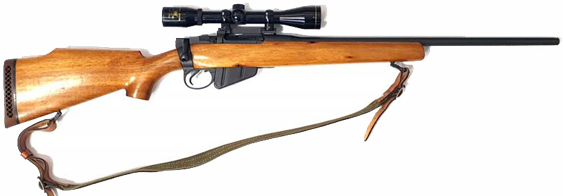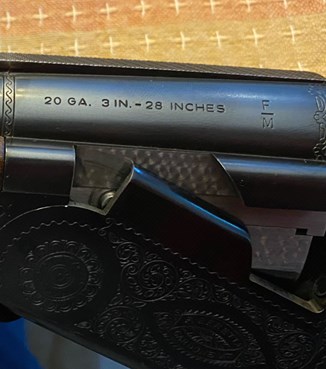Firearm Trainers: 4 Dangerous Pitfalls to Avoid (pages 12-14)
Tags: Training, Safety, Instructor, NRA Club Connections
Firearm training is about as serious as a business gets. If you are an instructor, it’s incumbent on you to run a safe class.
by HEIDI LYN RAO posted on August 10, 2022
Support NRA Women DONATE
When I am conducting an NRA Instructor Course, whether it be a rifle, shotgun or pistol class, I do my best to impress upon my instructor candidate students that if there is an accident involving a firearm in their class, it is the instructor who is ultimately responsible. This includes any firearms training course being taught, even if it’s not an NRA course. The level of the instructor’s liability is dependent upon several factors.
This can particularly be an issue with students in their 20s and 30s, as this demographic grew up in a world of striker-fired pistols and Modern Sporting Rifles (MSRs). I make it clear to the students who wish to become instructors that they cannot turn their NRA Basic Pistol Course into a “Glock†course, nor can they turn their NRA Basic Rifle Course into an “AR-15†Course. I let them know that they need to become familiar with ALL types of firearms, if for no other reason but safety.
There are four things that I have encountered during instruction that could have led to serious accidents or death. These include the use of antique firearms; sporterized rifles; choked shotgun barrels; and loose ammunition in the classroom and on the range.
Antique Firearms
Antique firearms in a firearms training course can create a potential hazard. Remember, never shoot modern smokeless powder out of antique firearms made for black powder. I am not talking about muzzleloading firearms. I am talking about old firearms designed to shoot cartridges or shells filled with black powder, not modern smokeless powder. Manufacturers of firearms that shot black powder cartridges and shells phased out these guns by the early 1930s. Cartridge and shell manufacturers continued making black powder ammunition up until 1940.

Modern smokeless cartridges and shells produce higher pressures than cartridges made from black powder cartridges and shells. Shooting modern smokeless powder cartridges or shells out of firearms manufactured for black powder could create a condition that could lead to serious bodily injury or death. The pressure created by modern smokeless cartridges or shells could cause a catastrophic failure of equipment, or in layman’s term, the gun could blow up!
Therefore, it is extremely important for firearm instructors to educate themselves on all types of firearms from different eras. I had a situation in one of my NRA Basic Pistol Courses I was conducting. An individual showed up with an obsolete firearm: a “.41 Colt.†He had “.41 Magnum†ammunition. Had I not been familiar with antique revolvers or prepared for a situation like this, our day could have taken a turn for the worse.
Sporterized Rifles
Sporterized rifles can create a unique problem in your firearms training course. Several of my students have brought these into my NRA Basic Rifle Courses. These rifles are old military rifles that have been refitted for hunting or target shooting. The fore-ends of these rifles were shortened, and military sights were replaced with hunting or target sights. Sporterized rifles were common in the 1970s and 1980s, then seemed to have been put in the back end of closets and gun safes, replaced by modern rifles. Sporterized rifles seem to be on the rebound, however. Firearms instructors need to be aware of the problems that could arise.

For starters, many military rifles did not have a data stamp depicting the caliber of the firearm. There are many individuals who have used the wrong ammunition in old military and sporterized firearms, sometimes with disastrous results. To make sporterized rifles even more risky, many have been rebored to accept a different caliber altogether.
I do not allow sporterized rifles in my NRA Basic Rifle Classes for two reasons. The first is that many old military rifles have been abused and handled roughly. I do not want to take a chance on one of these rifles having a catastrophic failure in my class. Second, without a verification from a qualified gunsmith, there may be no way of telling exactly what caliber a sporterized rifle is chambered for. I always err on the side of caution!

Choked Barrels
Watch out for choked shotgun barrels that are brought into your class. Choked shotgun barrels are barrels that have their choke already built into the end of the barrel. By the late 1980s, choked barrels were replaced with modern shotgun barrels that have screw-in chokes. Prior to 1990, a shotgunner might have three different barrels to go with the action of their shotgun. These barrels will be marked Imp or IC (Improved Cylinder), Mod or M (Modified), or Full or F (Full). Now shotgunners have one barrel and three screw-in chokes.

Choked barrels prior to 1990 are still very common. The rule of thumb is that you should never shoot nontoxic (steel) shot out of a choked barrel. Nontoxic shot does not compress like lead, so it can blow the end out of a choked barrel. If you are conducting a class at a range that allows only nontoxic shot, then you should not allow choked barrels in your class. If the range you use allows lead shot, you, as the instructor, need to ensure that the shooter does not have any steel shot.
There is another rule you need follow when it comes to choked barrels. If the range does not allow lead shot and your student has a full-choked shotgun barrel, once again, do not allow them to use it in your class. The metals prior to 1990 were not as strong as modern metals and as a result, the end of the barrel could split. I am a little bit stricter in my classes than many, but I just do not want any mishaps or accidents.
Loose Ammunition
Loose ammunition should never be allowed to be used in your firearms training course. All ammunition that is allowed on your range should be in its original packaging. The original packaging should have all the ballistic data you need to determine that the ammunition is safe to shoot. This data includes muzzle velocity, grains of powder and bullet weight. Most commercial ammunition is Sporting Arms and Ammunition Manufacturers Institute (SAAMI) approved. SAAMI sets the recommended ballistics that is safe for each specific caliber. It would be a good policy to adopt for your class that all ammunition must be in its original packaging and must be SAAMI approved. Just remember that not all commercial ammunition is SAAMI approved.
Loose ammunition might also be handloads or reloads. Reloaded ammunition might be loaded too hot (too much propellant) or even too light (too little). Both conditions can cause a serious issue. Ammunition that is loaded too hot could cause catastrophic failure of the firearm, which could lead to the gun coming apart under great pressure. Ammunition reloaded too light could lead to squib loads that lodge inside the barrel. If a round is lodged in the barrel and another round is fired behind, it could also lead to a catastrophic failure of the firearm coming apart under great pressure. Both conditions could lead to bodily injury or death.
Other ammunition issues include soft-nosed and solid ammunition. Many individuals do not understand the performance of these types of bullets. Soft-nosed ammunition expands quickly, and solids have deep penetration. This is important to know depending on the type of backstop at the range and the rules of the facility. Many facilities prohibit the use of solids, so it is up to the instructor to know the differences.
Another factor is shotgun ammunition and whether the shells have steel shot or lead shot. The only way to guarantee what type of shot you have in your shells is marked on the original box. Some ranges only allow lead shot, while other ranges only allow steel shot.
I do not allow loose ammunition in my classes and make it clear in e-mails prior to the class so that the students can make any adjustments. Still, I have students show up with loose ammunition in range bags and zip lock storage bags. I do not make exceptions because safety is always paramount. These students must go to the store at the range where I conduct classes and purchase the proper ammunition for our training.
As instructors, it’s incumbent upon us to practice what we preach and not let familiarity breed contempt when it comes to safety. Lead by example, follow these rules and your students will thank you!
